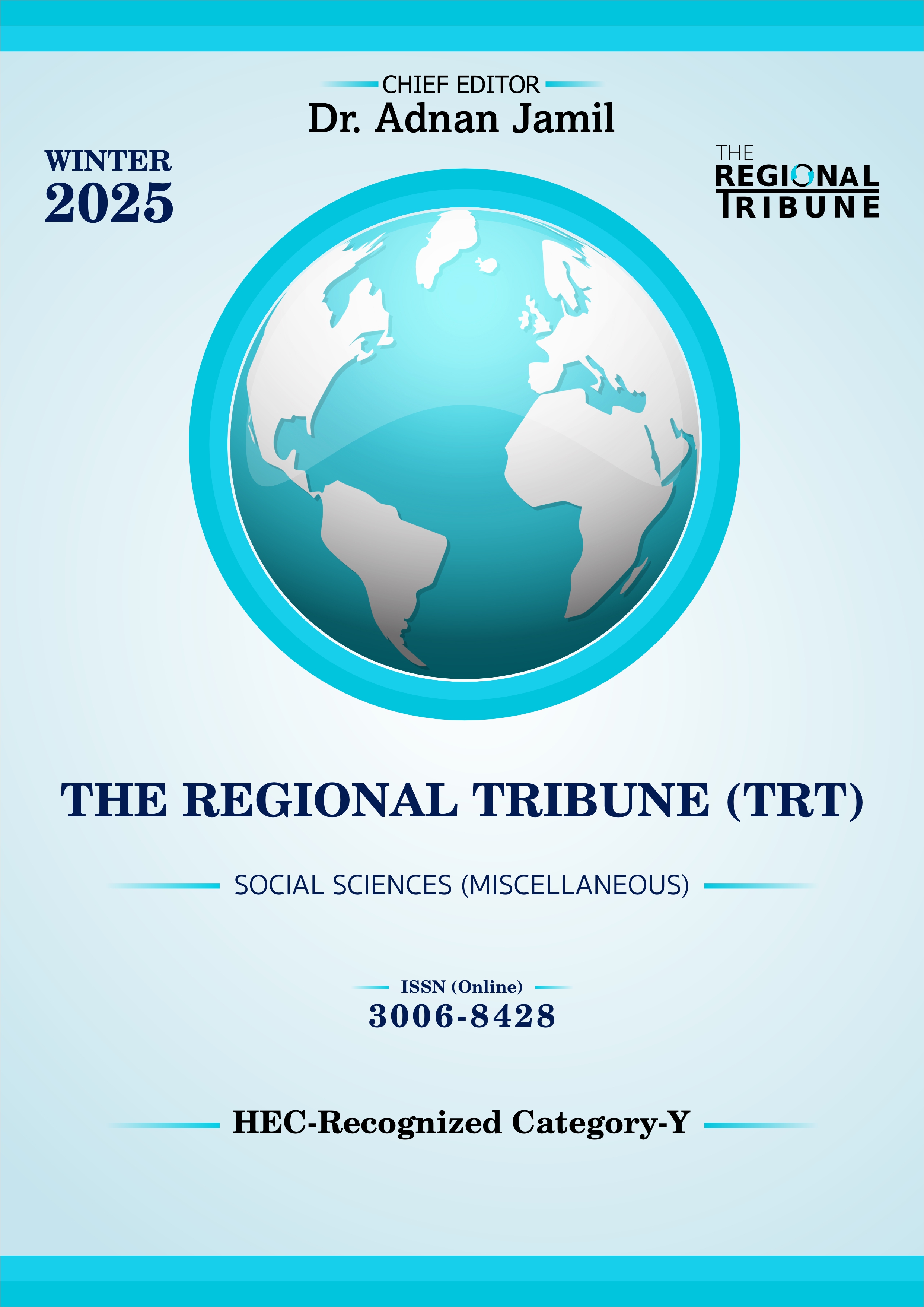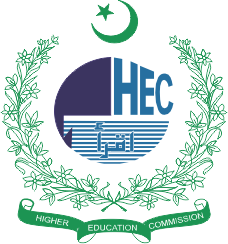Review of Effective Communication Strategies and Employee’s Performance at Workplace Lahore, Pakistan
DOI:
https://doi.org/10.63062/trt/WR25.065Keywords:
Effective Communication, Employees’ Productivity, Workplace Efficiency, Lahore, PakistanAbstract
Efficient communication is pivotal for creating and promoting a productive culture for a harmonious work atmosphere within organizations while encouraging employees for optimal performance. This research aims to review the effective communication strategies at organizational workplaces and their effects on employee performance in the local Pakistani context. This review paper was developed, using both primary and secondary data. The secondary data was extracted from varied databases and repositories, such as JSTOR, Academia, Google Scholars, and Research Gate, considering the accessibility. Addressing the review objective, key search terms were developed and 36 articles were selected. Further, secondary data was complemented with primary data, where a sample of four relevant organizations in district Lahore (Pakistan) was taken to visit and conduct face-to-face in-depth interviews with the concerned officials. A total of 08 in-depth interviews were conducted, followed by transcription. Review data was synthesized and thematic analysis was performed. It concludes that a clear and consistent flow of information between employers/managers and employees substantially enhances organizational effectiveness. The review acknowledges the prerequisite of two-way communication between employers/managers and employees to enhance efficiency at both ends. It fosters trust, reduces misunderstandings, and mitigates counterproductive work behaviors. This research highlights the importance of balancing modern communication technologies with traditional methods to enhance organizational performance and employee engagement. A hybrid communication approach can offer a more effective strategy for non-profit and public sector organizations, improving collaboration, clarity, and overall productivity.
References
Abbas, W., & Asghar, I. (2010). The role of leadership in organizational change: relating the successful organizational change with visionary and innovative leadership. 1-53. https://www.diva-portal.org/smash/record.jsf?pid=diva2%3A326289&dswid=-157
Afshan, S., Sobia, I., Kamran, A., & Nasir, M. (1995). Impact of training on employee performance: A study of telecommunication sector in Pakistan. Interdisciplinary Journal of Contemporary Research in Business, 4(6), 646-661. https://www.scirp.org/reference/referencespapers?referenceid=3399029
Amber, Q., Ahmad, M., Khan, I. A., & Hashmi, F. A. (2019). Knowledge sharing and social dilemma in bureaucratic organizations: Evidence from the public sector in Pakistan. Cogent Business & Management, 6(1), 1685445. https://doi.org/10.1080/23311975.2019.1685445
Asrar-ul-Haq, M., Kuchinke, K. P., & Iqbal, A. (2017). The relationship between corporate social responsibility, job satisfaction, and organizational commitment: Case of Pakistani higher education. Journal of Cleaner Production, 142, 2352-2363. https://doi.org/10.1016/j.jclepro.2016.11.040
Blau, P. (2017). Exchange and power in social life. Routledge. https://doi.org/10.4324/9780203792643
Bücker, J. J. L. E., Furrer, O., Poutsma, E., & Buyens, D. (2014). The impact of cultural intelligence on communication effectiveness, job satisfaction and anxiety for Chinese host country managers working for foreign multinationals. The International Journal of Human Resource Management, 25(14), 2068–2087. https://doi.org/10.1080/09585192.2013.870293
Campbell, S., Phillips, S. C., & Phillips, D. (2020). Lack of Communication between Management and Employees. SIASAT, 4(3), 32–39. https://doi.org/10.33258/siasat.v5i3.67
Cropanzano, R., & Mitchell, M. S. (2005). Social exchange theory: An interdisciplinary review. Journal of management, 31(6), 874-900. https://doi.org/10.1177/0149206305279602
Dwumah, P., Akuoko, K. O., & Ofori-Dua, K. (2015). Communication and productivity in Vodafone-Ghana, Kumasi in the Ashanti Region of Ghana. International Journal of Business and Management, 10(10), 116. http://dx.doi.org/10.5539/ijbm.v10n10p116
Ean, L. C. (2010). Face-to-face versus computer-mediated communication: Exploring employees’ preference of effective employee communication channel. International journal for the advancement of science & arts, 1(2), 38-48.
Eisenhardt, K. M., & Sull, D. N. (2001). Strategy as simple rules (Vol. 6, No. 4). Harvard Bus Pub.
Eppler, M. J., & Mengis, J. (2008). The Concept of Information Overload - A Review of Literature from Organization Science, Accounting, Marketing, MIS, and Related Disciplines (2004). The Information Society: An International Journal, 20(5), 271-305. https://link.springer.com/chapter/10.1007/978-3-8349-9772-2_15
Greiner, L.E. (1989). Evolution and revolution as organizations grow. Springer.
Hee, O. C., Qin, D. A. H., Kowang, T. O., Husin, M. M., & Ping, L. L. (2019). Exploring the Impact of Communication on Employee Performance. International Journal of Recent Technology and Engineering, 8(3S2), 654–658. http://dx.doi.org/10.35940/ijrte.C1213.1083S219
Heyden, M. L., Fourné, S. P., Koene, B. A., Werkman, R., & Ansari, S. (2017). Rethinking ‘top‐down’and ‘bottom‐up’roles of top and middle managers in organizational change: Implications for employee support. Journal of management studies, 54(7), 961-985. https://doi.org/10.1111/joms.12258
Homans, G. C. (1958). Social Behavior as Exchange. American Journal of Sociology, 63(6), 597–606. https://www.journals.uchicago.edu/doi/abs/10.1086/222355
Ify, I. P. (2024). Communication strategies and employee productivity. Global Journal of Social Sciences, 23(1), 97–102. https://doi.org/10.4314/gjss.v23i1.8
Kauffeld, S., & Lehmann-Willenbrock, N. (2012). Meetings matter: Effects of team meetings on team and organizational success. Small Group Research, 43(2), 130--158. https://doi.org/10.1177/1046496411429599
Khan, F. (2022). Quantitative Risk Analysis of Fire Load and Combustible Materials in Office Workplaces in the United States. Global Regional Review, 7(2), 359-366. http://dx.doi.org/10.31703/grr.2022(VII-II).34
Khan, R. A. G., Khan, F. A., & Khan, M. A. (2011). Impact of training and development on organizational performance. Global Journal of Management and Business Research, 11(7), 63-68. https://www.scirp.org/reference/referencespapers?referenceid=1624819
Kiptulon, E. K., Elmadani, M., Limungi, G. M., Simon, K., Tóth, L., Horvath, E., ... & Siket, A. U. (2024). Transforming nursing work environments: the impact of organizational culture on work-related stress among nurses: a systematic review. BMC health services research, 24(1), 1-16. https://link.springer.com/article/10.1186/s12913-024-12003-x
Kozlowski, S. W. J., & Ilgen, D. R. (2020). Enhancing the Effectiveness of Work Groups and Teams. Psychological Science in the Public Interest, 7(3), 77–124. https://doi.org/10.1111/j.1529-1006.2006.00030.x
Kumar. M. D. (2012). Leveraging Technology towards HR Excellence. Information Management and Business Review, 4(4), 205–216. https://doi.org/10.22610/imbr.v4i4.981
Lehmann-Willenbrock, N., & Hung, H. (2024). A multimodal social signal processing approach to team interactions. Organizational Research Methods, 27(3), 477-515. https://doi.org/10.1177/10944281231202741
Lehmann-Willenbrock, N., Allen, J. A., & Kauffeld, S. (2013). A sequential analysis of procedural meeting communication: How teams facilitate their meetings. Journal of Applied Communication Research, 41(4), 365-388. https://doi.org/10.1080/00909882.2013.844847
Lehmann-Willenbrock, N., Rogelberg, S. G., Allen, J. A., & Kello, J. E. (2017). The critical importance of meetings to leader and organizational success: Evidence-based insights and implications for key stakeholders. Organizational Dynamics, 47(1), 32. https://digitalcommons.unomaha.edu/psychfacpub/192/
Liaquat, M., & Mehmood, K. (2017). Organization Citizenship Behavior: Notion of Social Exchange Theory. Journal of Business and Social Review in Emerging Economies, 3(2), 237. https://doi.org/10.26710/jbseee.v3i2.1347
Luong, A., & Rogelberg, S. G. (2005). Meetings and More Meetings: The Relationship between Meeting Load and the Daily Well-Being of Employees. Group Dynamics: Theory, Research, and Practice, 9(1), 58–67. https://psycnet.apa.org/buy/2005-02475-005
Men, L. R., & Yue, C. A. (2019). Creating a positive emotional culture: Effect of internal communication and impact on employee supportive behaviors. Public relations review, 45(3), 101764. https://doi.org/10.1016/j.pubrev.2019.03.001
Musheke, M. M., & Phiri, J. (2021). The Effects of Effective Communication on Organizational Performance Based on the Systems Theory. Open Journal of Business and Management, 9(2), 659–671. https://doi.org/10.4236/ojbm.2021.92034
Nebo, C. S., Nwankwo, P. N., & Okonkwo, R. I. (2015). The role of effective communication on organizational performance: A study of Nnamdi Azikiwe University, Awka. Review of public administration and management, 4(8), 131-148.
Nyoike, A., & Karimi, J. (2023). Effect of transformational leadership on counterproductive work behaviors and performance management. Topical issues in strategic human resource management, 57-76.
Rajhans, K. (2012). Effective organizational communication: A key to employee motivation and performance. Interscience Management Review, 2(2), 81-85. https://www.interscience.in/imr/vol2/iss2/13?utm_source=www.interscience.in%2Fimr%2Fvol2%2Fiss2%2F13&utm_medium=PDF&utm_campaign=PDFCoverPages
Rogelberg, S. G., Leach, D. J., Warr, P. B., & Burnfield, J. L. (2006). “Not Another Meeting!” Are Meeting Time Demands Related to Employee Well-Being?. Journal of Applied Psychology, 91(1), 83–96. https://psycnet.apa.org/buy/2006-00819-008
Shair, W., Waheed, A., Kamran, M. M., & Kubra, N. (2022). Digital Divide in Pakistan: Barriers to ICT Usage among the Individuals of Pakistan. Journal of Economic Impact, 4(3), 196–204. https://doi.org/10.52223/jei4032206
Solid, Fatih, M., Fauzi, N., & Norman, E. (2025). Effective Communication in Building Healthy and Productive Relationships. MES Management Journal, 4(1), 662-671. https://doi.org/10.56709/mesman.v4i1.631
Stevens, R. H, & Ogunji, E. (2011). Preparing business students for the multi-cultural work environment of the future: A teaching agenda. International Journal of Management, 28(2), 528. https://www.proquest.com/openview/70bb26b74be9cca4a67f54ad6dc5262e/1?pq-origsite=gscholar&cbl=5703
Sypniewska, B. (2020). Counterproductive work behavior and organizational citizenship behavior. Advances in Cognitive Psychology, 16(4), 321. https://doi.org/10.5709/acp-0306-9
Timmermann, S., Staegemann, D., Volk, M., Pohl, M., Haertel, C., Hintsch, J., & Turowski, K. (2022). Facilitating the Decentralisation of Software Development Projects from a Project Management Perspective: A Literature Review. FEMIB, 22-34. https://doi.org/10.5220/0010938200003206
Ul Haq, I., & Faizan, R. (2023). Communication within the workplace: Systematic review of essentials of communication.
Vidhani, N., & Mishra, E. (2024). Enhancing Work Efficiency through Digital Integration: A Study in Higher Education. Asian Journal of Management, 15(3), 249-255. https://ajmjournal.com/HTML_Papers/Asian%20Journal%20of%20Management__PID__2024-15-3-6.html
Downloads
Published
Issue
Section
License
Copyright (c) 2025 Nadia Asar Khan, Dr. Sarosh Iqbal, Dr. Sidrah Maqsood

This work is licensed under a Creative Commons Attribution-NonCommercial 4.0 International License.



